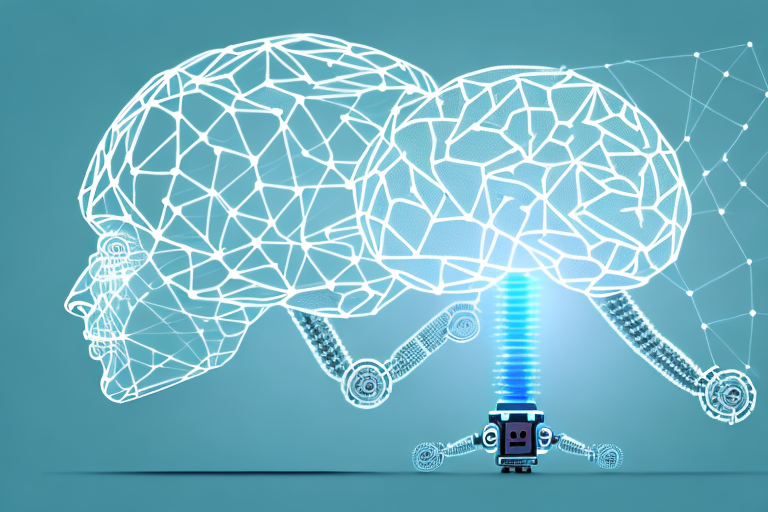In recent years, machine learning has become an increasingly popular topic, with businesses and industries seeking new ways to improve their operations and stay competitive. Machine learning algorithms, fueled by the vast amounts of data available, offer exciting opportunities for organizations to gain valuable insights and make informed decisions. In this article, we will explore the benefits of machine learning, the types of algorithms used, and real-world applications where it has proved tremendously helpful.
Understanding Machine Learning
Definition and Basics of Machine Learning
Machine learning is a technique designed to enable machines to learn patterns from data and improve their accuracy through experience. Unlike traditional programming, where a programmer writes rules for a machine to follow, machine learning algorithms can learn and adapt to new data sets without explicit instructions.
Machine learning algorithms are used in a wide range of applications, including image recognition, speech recognition, natural language processing, fraud detection, and recommendation systems. At its core, machine learning is about models that map inputs, such as data, to outputs, such as predictions or decisions, based on patterns in that data.
One of the key advantages of machine learning is its ability to handle large and complex data sets. Machine learning algorithms can identify patterns and relationships in data that might be difficult or impossible for humans to detect.
Types of Machine Learning Algorithms
There are three main types of machine learning algorithms: supervised learning, unsupervised learning, and reinforcement learning.
Supervised learning algorithms aim to predict outputs from labeled training data. For example, a supervised learning algorithm could be trained on a data set of labeled images of cats and dogs, and then used to predict whether a new image is of a cat or a dog.
Unsupervised learning algorithms, on the other hand, try to find patterns in data without knowing the output. This type of algorithm is often used for clustering, where the goal is to group similar data points together. For example, an unsupervised learning algorithm could be used to group customers based on their purchasing behavior.
Reinforcement learning algorithms are used to optimize decisions through a trial-and-error process. This type of algorithm is often used in robotics and game playing. For example, a reinforcement learning algorithm could be used to teach a robot to navigate a maze.
The Role of Data in Machine Learning
One critical aspect of machine learning is the importance of data. In many cases, the quality and quantity of data available can significantly impact the accuracy of machine learning models.
Machine learning algorithms need large volumes of data to enable them to identify patterns that can be used to make predictions or decisions. For instance, a healthcare provider can use patient data to improve diagnoses, while a retailer can use data to better understand customer preferences, and a manufacturer can use data to optimize operations.
However, it's not just the quantity of data that matters. The quality of the data is also important. Machine learning algorithms are only as good as the data they are trained on, so it's important to ensure that the data is accurate, relevant, and representative of the problem at hand.
Another important consideration is the ethical use of data in machine learning. As machine learning algorithms become more advanced and are used in more applications, there is a growing concern about the potential for bias and discrimination. It's important for developers to be aware of these issues and take steps to mitigate them.
Applications of Machine Learning
Machine learning has revolutionized the way we approach various industries, and its applications are endless. From healthcare to transportation, machine learning algorithms have found their way into every sector, providing valuable insights and improving efficiency. Let's explore some of the most exciting applications of machine learning.
Healthcare and Medicine
Machine learning algorithms have found numerous applications in healthcare and medicine, where improving patient outcomes is the main objective. For example, medical researchers can use machine learning models to identify risk factors for developing chronic diseases such as diabetes, heart disease, and cancer. By analyzing large sets of patient data, machine learning algorithms can identify patterns that contribute to the development of these diseases, allowing healthcare providers to intervene early and prevent their onset.
Machine learning can also be used to improve diagnosis accuracy. Doctors can use patient data, such as medical history, lab results, and imaging scans, to train machine learning models to identify patterns that are indicative of specific diseases. This approach can help doctors make more accurate diagnoses, leading to better treatment outcomes.
Finance and Banking
Machine learning algorithms can reduce the risk of financial and banking fraud by constantly monitoring patterns of transactions and identifying fraudulent activity promptly. By analyzing large volumes of transaction data, machine learning algorithms can identify patterns that are indicative of fraudulent activity, such as unusual spending patterns or transactions from unfamiliar locations. This approach can help financial institutions prevent fraudulent activity before it occurs, saving them millions of dollars in losses.
Additionally, machine learning can be used in stock market analysis to predict market trends and make decisions accordingly. By analyzing historical data and current market trends, machine learning algorithms can predict future market trends and help investors make informed decisions.
Marketing and Customer Service
Machine learning can provide valuable insights on customer behavior and preferences. Marketers can use customer data and behavior to identify trends and develop personalized marketing campaigns more efficiently. By analyzing customer data, machine learning algorithms can identify patterns in customer behavior, such as purchase history, search queries, and website interactions, to develop targeted marketing campaigns that are more likely to resonate with customers.
Similarly, customer service departments can use machine learning to respond promptly to customer inquiries and improve overall customer satisfaction. By analyzing customer data and interactions, machine learning algorithms can identify patterns in customer inquiries and provide automated responses that are tailored to their needs.
Manufacturing and Supply Chain Management
Machine learning algorithms can also be used to optimize manufacturing operations by identifying patterns in production data and predicting breakdowns in machines. By analyzing data from sensors and other sources, machine learning algorithms can identify patterns that indicate when a machine is likely to break down, allowing manufacturers to perform maintenance before it fails.
Additionally, machine learning can help managers in supply chain operations to track inventory levels and predict customer demand to improve efficiency. By analyzing historical sales data and market trends, machine learning algorithms can predict future demand for products, allowing manufacturers and retailers to optimize their inventory levels and prevent stockouts.
Transportation and Logistics
Machine learning can make transportation and logistics more efficient by using real-time data to optimize routes and schedules. By analyzing data from GPS sensors, traffic cameras, and other sources, machine learning algorithms can identify the most efficient routes for delivery vehicles, reducing travel time and fuel costs.
This approach can also improve driver safety by identifying driving patterns that increase the likelihood of accidents. By analyzing data from sensors in vehicles, machine learning algorithms can identify patterns such as speeding, hard braking, and erratic driving, allowing fleet managers to intervene and prevent accidents before they occur.
As we have seen, machine learning has a wide range of applications across various industries. By analyzing large volumes of data, machine learning algorithms can identify patterns and insights that are not visible to the human eye, leading to improved efficiency, better decision-making, and ultimately, better outcomes for businesses and individuals alike.
Advantages of Machine Learning
Machine learning is a subset of artificial intelligence that involves training algorithms to learn from data and make predictions or decisions based on that data. The applications of machine learning are vast and varied, and the benefits of this technology are numerous. In this article, we will explore some of the advantages of machine learning.
Improved Decision-Making
One of the most significant advantages of machine learning is its ability to help organizations make better decisions. By analyzing historical data, machine learning algorithms can provide accurate predictions about future outcomes. For example, a healthcare provider can use machine learning to predict which patients are at risk of developing certain conditions and provide preventative care. Similarly, a financial institution can use machine learning to predict which customers are likely to default on their loans and take proactive measures to mitigate that risk. By making better decisions, organizations can be more efficient, reduce costs, and increase revenues.
Enhanced Customer Experience
Machine learning can also help organizations to provide a better customer experience. By analyzing customer data, machine learning algorithms can provide personalized recommendations and improve overall customer satisfaction. For example, an online retailer can use machine learning to recommend products to a customer based on their preferences and purchase history. Similarly, a streaming service can use machine learning to recommend movies and TV shows that a customer is likely to enjoy based on their viewing history. By providing a more personalized experience, organizations can increase customer loyalty and retention.
Increased Efficiency and Productivity
Machine learning can also help organizations to increase efficiency and productivity. By analyzing data in real-time, machine learning algorithms can identify patterns and insights that humans might miss. For example, a manufacturing plant can use machine learning to identify inefficiencies in their production line and make adjustments to improve output. Similarly, a logistics company can use machine learning to optimize their delivery routes and reduce transportation costs. By streamlining operations and optimizing resources, organizations can do more with fewer resources.
Fraud Detection and Prevention
Machine learning algorithms can also help organizations to detect and prevent fraud. By analyzing data in real-time, machine learning algorithms can identify anomalies and patterns that might indicate fraudulent activity. For example, a credit card company can use machine learning to identify transactions that are outside of a customer's normal spending habits and flag them for review. Similarly, a healthcare provider can use machine learning to identify instances of medical fraud and take action to prevent it. By detecting fraud and anomalies in real-time, organizations can reduce losses and protect their customers.
Personalization and Customization
Machine learning can also help organizations to provide personalized recommendations and customization. By analyzing customer data, machine learning algorithms can provide recommendations based on a customer's preferences, search history, and purchase behavior. For example, a music streaming service can use machine learning to recommend songs and playlists that a customer is likely to enjoy based on their listening history. Similarly, a fashion retailer can use machine learning to recommend clothing items that a customer is likely to purchase based on their browsing and purchase history. By providing personalized recommendations and customization, organizations can increase customer satisfaction and loyalty.
In conclusion, machine learning algorithms provide organizations with tremendous potential to gain valuable insights from vast amounts of data. The benefits of machine learning extend to various industries, including healthcare, finance, marketing, manufacturing, and transportation. By improving decision-making, providing a better customer experience, increasing efficiency and productivity, and detecting fraud and anomalies in real-time, machine learning is changing the face of business for the better.









